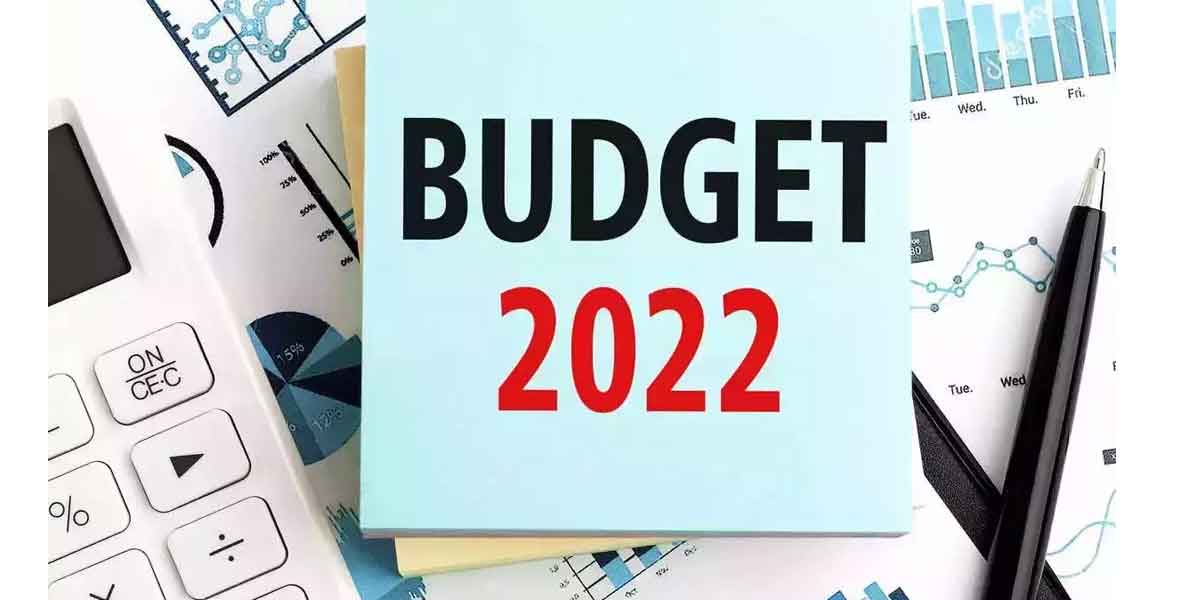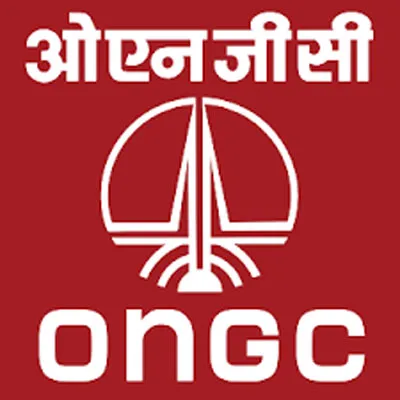TECHNOLOGY
“I am happy to see this year’s Union Budget laying down a blueprint for sustainable development in the future. We applaud the Government for its consistent commitment and sharp focus on the important priorities of improving climate change and accelerating energy transition. The suggested framework around Gati Shakti (infrastructure development) and inclusive development will lay a good foundation for long-term infrastructure with an eye on short-term economic and job growth. We also welcome the actions on the National Digital Health Mission. The launch of the sovereign green bonds is an evidence of the Government’s active support to ‘green’, which will significantly help reduce the carbon intensity in the years to come. For India to achieve its climate goals, financing is the need of the hour. This will require deep public-private partnerships. We, at GE, have been investing in sustainable technologies for decades. We welcome the encouragement to private industry for taking up the design and development of military platforms and equipment in collaboration with DRDO. We are committed to bringing those technologies in the areas of sustainable aviation, green hydrogen, emission controls and decarbonisation to India to support the country’s goals.”
- Mahesh Palashikar, President, GE South Asia
“The intended introduction of a battery swapping policy is a welcome move as it could encourage stakeholders in the value chain to devise innovative business models that reduce the lifestyle cost of EV [electric vehicles]. This combined with the focus on interoperability that will help address ongoing range and battery depletion concerns could boost EV adoption in the country.”
- Raghu Gullapalli, Managing Director, Lead - APAC and Middle East for Industrial & Mobility, Accenture
“The future-ready Budget has a strong focus on technology and highlights the growth of the IT sector and its immense potential, which will help the Indian economy become stronger and self-sustained. Guided by the active involvement of the states, digitisation of manual processes and interventions; integration of central and state-level systems through IT bridges; single-point access for all citizen-centric services; standardisation and removal of overlapping compliance; crowdsourcing of suggestions and ground-level assessment of the impact with active involvement of citizens and businesses will lead to overall efficiency and economic growth.
The financial support for the digital payment ecosystem announced in the previous budget will continue in 2022-23, further encouraging the adoption of digital payments and the enhanced use of payment platforms that are economical and user-friendly. The Budget highlights the rapid growth of digital banking, digital payments and fintech innovations. The Government’s continuous support to these sectors ensures that the benefits reach far and wide, along with user-friendliness. The laying of optical fibre in villages (to be completed by 2025) showcases the power of technology and enables citizens to get connected to the world, thereby leading to development.
We are a country with a large young population and the announcement of high-quality e-content in all spoken languages to be delivered by the Internet, mobile phones, TV, radio and digital teachers along with a digital university to provide access to world-class universal education, with a personalised learning experience, will help deliver quality education to our youth.
Further, as highlighted in the Budget, green energy and clean mobility systems have immense potential to modernise the country, thereby making Indian industry more inclusive and generating more employment. It will be an exciting space for the Indian IT industry and we are enthused with the announcement of the digital rupee to be issued by RBI and the green bonds for enhancement of green infrastructure. The creation of the digital health ecosystem will help further strengthen India’s healthcare system.”
- Amit Madhan, President & Group Head - Technology & eBusiness, Thomas Cook (India) Ltd.
“It is encouraging to see that data centres have been granted infrastructure status in Budget 2022. It is a significant moment for everyone involved in the technological industry. Data centres are critical to our country's digital growth. The 2022 Budget allocates more funds to data centres, fintech, the digital economy and other digital elements, which will undoubtedly benefit interconnection platforms like DE-CIX that are contributing to the digital economy's success. By virtue of our reach across the length and breadth of India, we will be able to play a significant role in the government endeavour to move to a digital economy.”
- Sudhir Kunder Country Director, DE-CIX India
“The initiatives to widen the scope of portals meant to support MSMEs is a good move and in combination with ‘One Nation, One Registration’, it will help in ease of doing business. However, while the ECLGS [emergency credit line guarantee scheme] will be extended till March 2023 and its guarantee cover will be expanded by Rs 50,000 crore to a total cover of Rs 5 lakh crore, several MSMEs and start-ups like us, who seek support in terms of tax benefits and access to low interest rates for business loans, have little to look forward to. On the other hand, the announcement of the 5G spectrum auction in 2022 to roll out 5G services across India and defined timelines to laying of optical fibre in villages by 2025 are definitely a big boost to the IT services sector as they will help accelerate innovation and make it more financially accessible to businesses. Further enhancing financial technology infrastructure is another positive step towards strengthening the overall digital infrastructure in the country, laying the strong foundation for a tech-enabled economy.
- Sumana Iyengar, CEO & Co-Founder, Goavega Software Pvt Ltd
INFRASTRUCTURE AND REAL ESTATE
“The Budget holds a lot of promise for the economy. It has a thrust on the social sector with investments in primary and vocational education, provision for drinking water to reach more households and the extension of the PM Awas Yojana to provide housing. In addition, its outlay for procurement of agricultural produce will reward farmers for their effort and put money in their hands, which will help propel consumption demand. The focus on the logistics sector through the PM Gati Shakti plan will give a fillip to the economy. Logistics costs in India are among the highest in the world. Creation of infrastructure is the best way to reduce costs and introduce competitiveness to serve both the domestic market and exports. The initiative of spurring investments from the private sector by taking the lead through government investments of Rs 7.5 lakh crore is laudable. The PLI [production-linked incentive] scheme outlay for solar modules will support solar power generation projects currently facing steep cost increases and supply constraints. Support for domestic manufacture of capital equipment by doing away with duty exemptions is also a welcome step. Reforms in customs administration will no doubt support both SEZs as well as other manufacturers in the domestic tariff area (DTA). Our SEZs are vulnerable to both disruptions in the global supply chain and the emphasis on domestic sourcing we increasingly see overseas. Permission to sell part of the capacity in DTA while maintaining a level playing field with domestic manufacturers will enhance scale and competitiveness while reducing vulnerability. The economy is on a slow recovery path. This Budget seeks to accelerate growth through investments.”
- Anil G Verma, Executive Director and President, Godrej & Boyce
“It is encouraging to see that improving India’s logistics infrastructure has been a key agenda for the Government. In support of its vision, Budget 2022-2023 has prioritised the logistics sector and extended further impetus for growth. The focus on the Gati Shakti plan is quite constructive. The plan for expressways, construction of 100 new cargo ports for multimodal logistics parks and expansion of urban metro systems will all help spur the development of new storage and logistics facilities across the country. This will further help lowering logistics costs. Moreover, the national highway network will be expanded by 25,000 km this year, which will speed up road logistics transportation. The allocation of Rs 20,000 crore to strengthen infrastructure projects will help improve connectivity. Another key point that has been discussed is the function of EVs in the logistics industry to promote sustainability. Additionally, the inclusion of technology advancements to enhance productivity will boost the performance of the logistics sector. Therefore, we feel there is immense potential and scope to drive demand in the warehousing and logistics industry.”
- Rajesh Jaggi, Vice Chairman - Real Estate, Everstone Group IndoSpace
While the Government’s focus remained towards promoting affordable housing, mid and high-income housing continues to be adversely impacted by high levels of taxation, both direct and indirect. Effective 12 per cent GST payable by the end buyer towards the purchase of a new house dampens the sale velocity of projects. In no other country, developed or developing, is the level of taxation this high for property transactions. When we add to this the additional stamp duty of 5-6 per cent payable to state governments as well as other high premiums payable for development in cities such as Mumbai and NCR, the Government in effect indirectly ends up becoming a significant economic partner in the project (33-40 per cent) with no investment/consideration. If we want to make homes affordable for the public at large (not just for lower-income families), this is where the solution lies. Given that a real-estate purchase is a high-ticket item for any middle-income family, we hope GST levels are rationalised in future budgets.”
- Vaibhav Jatia, Managing Director, Rhythm ResiTel
FINANCIAL SERVICES
“One of the key goals outlined by the Government through this Budget is to rely on the virtuous cycle starting from private investment, with public capital investment acting as an enabler for private investment. This is expected to act as a force multiplier where capex growth for the next phase would be funded by both public and private capital. Probably the most important theme of the Budget has been big public investment for modern infrastructure. The PM Gati Shakti programme would largely drive this. Under this programme, key segments such as roads, railways, airports, ports, mass transport, waterways, and logistics infrastructure are expected to get focused attention to drive forward the infrastructure agenda. With the Government planning to use innovative financing models to fund these projects, we expect an adequate supply of required long-term capital into the infrastructure story.”
- Shubham Jain, Chief Business Officer, Real Estate and Infrastructure, CredAvenue
“Outlay for capital expenditure is once again being stepped up sharply by 35.4 per cent to Rs 7.5 lakh crore in FY23. Moreover, the National Highways network will be expanded by 25,000 km in FY23; Rs 48,000 crore is allocated for the housing sector under PM Awas Yojana; PM Gati Shakti is a transformative approach for economic growth and sustainable development. The approach is driven by seven engines: roads, railways, airports, ports, mass transport, waterways and logistics infrastructure. All seven will pull forward the economy in unison. These initiatives augur well for the construction and cement sectors.
- Arafat Saiyed, Senior Research Analyst, Reliance Securities
“The Budget has continued to focus on infra development in water, sanitation, railways (including 400 Vande Bharat trains, multimodal parks and metro systems, among others. This is positive for infra and capital goods companies and will generate employment.”
- Amnish Aggarwal, Director - Institutional Research, Prabhudas Lilladher
“Road construction has been given a boost by increasing the target to 25,000 km of National Highways construction. Comparing this to the current construction of around 13,000 km, the target is almost double the current level. Also, bringing all key transport ministries under the Gati Shakti plan is a positive step for the logistics sector.”
- Vikas Singhania, CEO, TradeSmart
AUTOMOTIVE
“Budget 2022 is an articulation of purposeful intent enabled by a clear action plan. Building on the excellent Budget of last year, the Government has wisely continued on the path of prioritising economic growth with calibrated fiscal prudence. For the Indian automobile sector, which is a significant contributor to the nation’s GDP, the Budget offers continuity and also additional opportunities to drive multi-year growth. Specifically, the robust increase in capex by 35.4 per cent to Rs 7.5 lakh crore and a comprehensive investment plan for infrastructure is a significant growth booster. Additionally, the launch of the well-conceived PM Gati Shakti program for multimodal transport, including 100 cargo terminals and investments in 25,000 km of highways, apart from investments in ports and metros, is an excellent development that will help create world-class transport infrastructure in the country. This will reduce logistics costs and transit times, increase employment and make us globally competitive with avenues for better and more efficient mobility solutions. Additionally, plans to create EV charging infrastructure, including the national policy for battery swapping combined with the already announced automotive PLI scheme, furthers the agenda for green mobility. We welcome this balanced, thought-through Budget.”
- PB Balaji, Group CFO, Tata Motors
CHEMICALS
“This Budget is progressive in nature with technology enablers across key contributory sectors. It lays down a robust path to fast-track India towards a centenary of equality, entrepreneurial drive and economic upliftment, aspiring for a sharp rebound in the Indian economy at 9.2 per cent. A capital expenditure allocation of Rs 7.5 lakh crore towards digitisation of the economy is a clear message to the world that New India’s inclusive and differentiated growth will lead to creation of opportunities for millions of youth, women and farmers. It also seeks a smooth transition in the country’s energy needs and commitments on climate change. The introduction of a digital rupee by using blockchain technology, focus on 5G, drone technology and clean energy are all enablers to build a sustainable, digital, and inclusive India. A major push to free televised education through a digital university under a ‘one-class-one-channel’ scheme is a welcome move to facilitate education for millions of students across rural India.
The announcement of the PM Gati Shakti programme for digital multimodal connectivity will aid in the creation of an agile supply chain and reduced travel time for movement of goods. This initiative along with high focus on infrastructure will help make India competitive. The one-station-one-product concept is well thought out and has the potential to be popularised to support local businesses and supply chains. Smart infrastructure spending creates a multiplier effect on long-term sustainable economic growth.
The removal of exemptions on customs levy on certain chemicals and textiles that can be manufactured in India and provision of concessional duties on raw material used in manufacturing of intermediate products will boost the objective of Make in India and Atmanirbhar Bharat. Indeed, Budget 2022 has laid a strong foundation for sustainable growth through focus on clear prioritisation of public spending, infrastructure development, digital economy and improved logistics, making India a competitive manufacturing destination for the world.
- Rahul Tikoo, MD, India Sub Continent, Huntsman International (India)
Images Source: Google Images




















